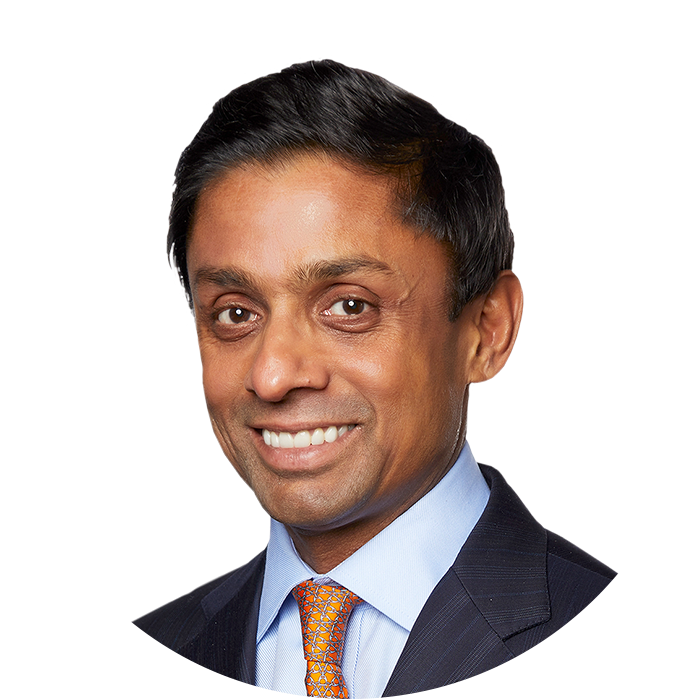China’s economic transformation, from an export-reliant manufacturing base to a domestically focused innovation powerhouse, has tipped the scales in the Emerging Markets category.
How has the landscape within emerging markets (EM) changed over time? How has China evolved as a component of EM?
Emerging markets have made a dramatic shift over the past 10 years, from a materials- and energy-heavy index to an increase in consumer-based sector weights, now largely driven by its tech and finance-focused constituents. Benchmark exposures to Brazil and Russia have been reduced making way for China, India and Taiwan with China as the greatest beneficiary.
The modernized EM index is evolving similar to how developed markets have over time. China’s growth over the past decade has led to its current status as the world’s second largest economy, and with increased access to investors, it has now become by far the largest component of the MSCI Emerging Markets Index. Transitioning from an export-heavy economy to a more consumer-focused one, China presents a strong market for growth opportunities. It’s also a leader in the technology sector, competing closely with the US.
How is investing in China different from other EM countries?
As a major component of the EM indices, and with several key differences in market dynamics and investor access, we approach China in a distinct manner. As a quantitative manager, we typically view companies in emerging markets through a regional and sector-peer relative basis. In assessing Chinese companies, however, we use a dedicated stock selection model that is separate from the rest of Asia. For investors, China is very different from other technology-heavy EM countries such as South Korea and Taiwan. One key difference is that value typically does not work as well in China, so we have tilted toward growth.
What are the benefits of investing in China and your approach?
We’ve done very well in EM over the past few years, which hasn’t been true for many quant managers. China now accounts for about 40% of the MSCI Emerging Markets Index, and our disciplined process allows us to capture the breadth of such a large universe of securities. The inefficiencies of China’s equity market also present us with increased alpha opportunity.
Another critical consideration when investing in emerging markets is the relatively high trading costs compared to developed markets. To deliver alpha efficiently, my team has constructed a sophisticated transaction cost model which is used in conjunction with the alpha model as part of our investment process. The model helps us quantify the trading impact of each security by estimating roundtrip transaction costs (market impact, commissions, stamp duties). Trading volume demanded and volatility are key drivers of our market impact cost model.
What’s the best way to get China exposure?
Our EM fund invests in China through multiple exchanges, accessing A-shares, H-shares, B-shares and through ADRs. Our transaction cost model determines which exchange offers the most advantageous trade for a particular stock. The Chinese market is evolving. When I started investing in EM more than a decade ago, we could not access China A-shares. Since 2016, we have been able to access A-shares through the Hong Kong–Shanghai–Shenzhen connectivity. Back then, the power of quantitative models was half as good for A-shares compared to H-shares, because systematic approaches didn’t work as well in mainland China’s highly volatile, retail-driven market. That didn’t deter us, as we believed the markets would converge given institutional entries into A-shares. Five years later, the quantitative models work equally as well in both markets and we believe we have captured that correctly in our EM strategy.
Is there an advantage to active management in China?
Again, there is a lot of alpha to be had in China. Generally, quantitative models work best in more inefficient markets. When we first joined Mackenzie to build out our global quantitative equity boutique, we started by launching strategies in the regions with the most alpha potential. We led with EM, then built out our international strategies and finally US. We see the opportunity in EM and China as an area ripe for active management.
Commissions, trailing commissions, management fees and expenses all may be associated with mutual fund investments. Please read the prospectus before investing. Mutual funds are not guaranteed, their values change frequently and past performance may not be repeated. The MSCI Emerging Markets Index captures large and mid cap representation across 27 Emerging Markets (EM) countries. The content of this document (including facts, views, opinions, recommendations, descriptions of or references to, products or securities) is not to be used or construed as investment advice, as an offer to sell or the solicitation of an offer to buy, or an endorsement, recommendation or sponsorship of any entity or security cited. Although we endeavour to ensure its accuracy and completeness, we assume no responsibility for any reliance upon it. This document may contain forward-looking information which reflect our or third party current expectations or forecasts of future events. Forward-looking information is inherently subject to, among other things, risks, uncertainties and assumptions that could cause actual results to differ materially from those expressed herein. These risks, uncertainties and assumptions include, without limitation, general economic, political and market factors, interest and foreign exchange rates, the volatility of equity and capital markets, business competition, technological change, changes in government regulations, changes in tax laws, unexpected judicial or regulatory proceedings and catastrophic events. Please consider these and other factors carefully and not place undue reliance on forward-looking information. The forward-looking information contained herein is current only as of May 31, 2021. There should be no expectation that such information will in all circumstances be updated, supplemented or revised whether as a result of new information, changing circumstances, future events or otherwise
